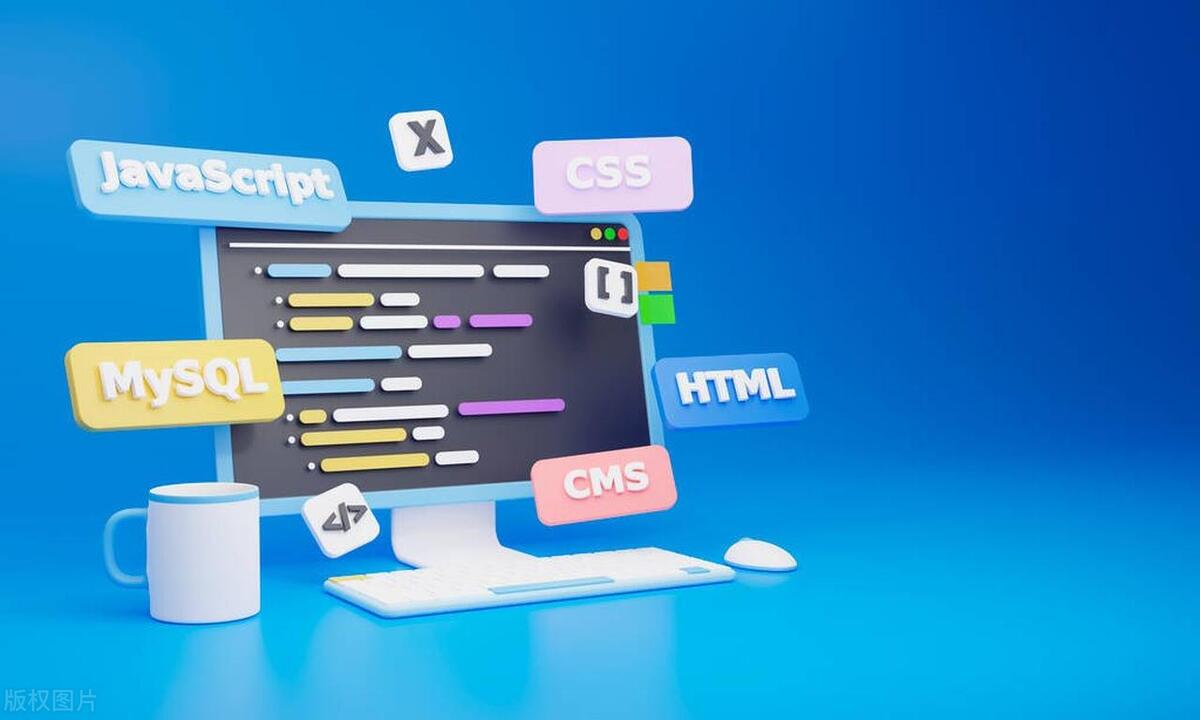The key to using OAuth 2.0 authentication on the front-end is to understand the authorization process and correctly implement request and callback processing. 1. Initiate an authorization request: Construct a third-party authorization URL, including scope, client_id, redirect_uri, response_type and other parameters, and guide the user to jump or pop-up login; 2. Process callback: Extract the code from the URL parameters of redirect_uri and send it to the backend to exchange for the token; 3. Store and use token: Safely store the token into localStorage or memory, and carry it in the Authorization header of each API request; 4. Associate the local account: the backend binds the OAuth user to the local account through provider and provider_id to achieve multi-way login unified. The entire process requires security, such as preventing XSS and avoiding storing tokens into cookies.

The front-end authentication using OAuth 2.0 is not as mysterious as it sounds. In essence, it is to let third-party services (such as Google and GitHub) help you verify the user identity, and then return a token, and the front-end uses this token to access its own back-end interface.

The key to the entire process is to understand the authorization process of OAuth and to correctly initiate requests and handle callbacks on the front end. Let’s talk about how to achieve this from a few practical perspectives.
How to initiate an OAuth authorization request
The first step is to guide the user to jump to the third-party authorization page. This step is usually by splicing a URL, allowing the user to click or jump automatically.

Taking Google Login as an example, you need to construct a link like this:
https://accounts.google.com/o/oauth2/v2/auth? scope=email profile& client_id=your client_id& redirect_uri=your callback address& response_type=code& state=Random string
-
scopeis the permission range you want to obtain, such as email and profile. -
client_idis the application ID you applied for on a third-party platform. -
redirect_uriis the address that jumps back to your front-end application after the user authorization. -
response_type=codemeans that what you want to obtain is an Authorization Code.
The usual practice is to provide a "login button" on the front end and click it and jump to this link. Some websites will open the authorization page in pop-up windows, which can prevent the main page from refreshing.

How to handle OAuth callbacks
After the user authorization is completed, the third party will redirect the user to redirect_uri you set and will come with a code parameter. At this time, your front-end needs to send this code to the back-end for the next step to exchange for the token.
For example: the user is redirected to https://your-site.com/auth/callback?code=abc123xyz . You can extract the code in JS on this page, and then send a POST request to a backend interface like /auth/google .
const urlParams = new URLSearchParams(window.location.search);
const code = urlParams.get('code');
fetch('/auth/google', {
method: 'POST',
body: JSON.stringify({ code }),
headers: { 'Content-Type': 'application/json' }
})
.then(res => res.json())
.then(data => {
// Store token to localStorage or localStorage.setItem('token', data.token);
});Notice:
- Do not store tokens to cookies directly at this stage, as it may easily cause security issues.
- If you are a single page application (SPA), remember to handle it separately for
/auth/callbackin the routing configuration.
How to use Token? Where does it exist?
After you get the token, you have the credentials to access your backend API. It is generally done to bring it with you every time you request it and put it in the Authorization field of the HTTP header:
fetch('/api/user/me', {
headers: {
Authorization: `Bearer ${localStorage.getItem('token')}`
}
});There are several options for the storage location of a token:
- localStorage : Suitable for long-term effective tokens, but pay attention to XSS risks.
- Memory variables : safer, but refresh the page will be lost.
- Secure cookie HttpOnly : It is more suitable for backend control, and the frontend does not recommend direct operation.
If your token has an expiration time, it is recommended to record the expiration time on the front end and automatically refresh before it is about to expire (provided that the backend supports refresh tokens).
How to associate third-party login with local accounts
Many products allow users to log in through OAuth or use local accounts. At this time, you need to consider how to map OAuth users to users in the local database.
Common practices are:
- When the user logs in through OAuth for the first time, the backend checks whether there is a binding record.
- If not, create a new local account and associate it with the OAuth ID.
- When logging in later, find the corresponding local user based on the OAuth ID.
You can maintain a table for each OAuth user, such as user_oauth_providers , which records fields such as provider (such as google, github), provider_id (the unique identifier of third-party users), user_id (the ID of local users).
The advantage of this is that it can support multiple OAuth platforms to log in to the same account, and it can also allow users to bind or unbind later.
Basically that's it. OAuth itself is a protocol specification, and the front-end only needs to follow the process. The key is not to miss key steps, such as handling callbacks, safely storing tokens, and cooperating with the backend.
The above is the detailed content of Implementing Frontend Authentication with OAuth 2.0. For more information, please follow other related articles on the PHP Chinese website!

Hot AI Tools

Undress AI Tool
Undress images for free

Undresser.AI Undress
AI-powered app for creating realistic nude photos

AI Clothes Remover
Online AI tool for removing clothes from photos.

Clothoff.io
AI clothes remover

Video Face Swap
Swap faces in any video effortlessly with our completely free AI face swap tool!

Hot Article

Hot Tools

Notepad++7.3.1
Easy-to-use and free code editor

SublimeText3 Chinese version
Chinese version, very easy to use

Zend Studio 13.0.1
Powerful PHP integrated development environment

Dreamweaver CS6
Visual web development tools

SublimeText3 Mac version
God-level code editing software (SublimeText3)
 How does React handle focus management and accessibility?
Jul 08, 2025 am 02:34 AM
How does React handle focus management and accessibility?
Jul 08, 2025 am 02:34 AM
React itself does not directly manage focus or accessibility, but provides tools to effectively deal with these issues. 1. Use Refs to programmatically manage focus, such as setting element focus through useRef; 2. Use ARIA attributes to improve accessibility, such as defining the structure and state of tab components; 3. Pay attention to keyboard navigation to ensure that the focus logic in components such as modal boxes is clear; 4. Try to use native HTML elements to reduce the workload and error risk of custom implementation; 5. React assists accessibility by controlling the DOM and adding ARIA attributes, but the correct use still depends on developers.
 Describe the difference between shallow and full rendering in React testing.
Jul 06, 2025 am 02:32 AM
Describe the difference between shallow and full rendering in React testing.
Jul 06, 2025 am 02:32 AM
Shallowrenderingtestsacomponentinisolation,withoutchildren,whilefullrenderingincludesallchildcomponents.Shallowrenderingisgoodfortestingacomponent’sownlogicandmarkup,offeringfasterexecutionandisolationfromchildbehavior,butlacksfulllifecycleandDOMinte
 What is the significance of the StrictMode component in React?
Jul 06, 2025 am 02:33 AM
What is the significance of the StrictMode component in React?
Jul 06, 2025 am 02:33 AM
StrictMode does not render any visual content in React, but it is very useful during development. Its main function is to help developers identify potential problems, especially those that may cause bugs or unexpected behavior in complex applications. Specifically, it flags unsafe lifecycle methods, recognizes side effects in render functions, and warns about the use of old string refAPI. In addition, it can expose these side effects by intentionally repeating calls to certain functions, thereby prompting developers to move related operations to appropriate locations, such as the useEffect hook. At the same time, it encourages the use of newer ref methods such as useRef or callback ref instead of string ref. To use Stri effectively
 Vue with TypeScript Integration Guide
Jul 05, 2025 am 02:29 AM
Vue with TypeScript Integration Guide
Jul 05, 2025 am 02:29 AM
Create TypeScript-enabled projects using VueCLI or Vite, which can be quickly initialized through interactive selection features or using templates. Use tags in components to implement type inference with defineComponent, and it is recommended to explicitly declare props and emits types, and use interface or type to define complex structures. It is recommended to explicitly label types when using ref and reactive in setup functions to improve code maintainability and collaboration efficiency.
 Server-Side Rendering with Next.js Explained
Jul 23, 2025 am 01:39 AM
Server-Side Rendering with Next.js Explained
Jul 23, 2025 am 01:39 AM
Server-siderendering(SSR)inNext.jsgeneratesHTMLontheserverforeachrequest,improvingperformanceandSEO.1.SSRisidealfordynamiccontentthatchangesfrequently,suchasuserdashboards.2.ItusesgetServerSidePropstofetchdataperrequestandpassittothecomponent.3.UseSS
 A Deep Dive into WebAssembly (WASM) for Front-End Developers
Jul 27, 2025 am 12:32 AM
A Deep Dive into WebAssembly (WASM) for Front-End Developers
Jul 27, 2025 am 12:32 AM
WebAssembly(WASM)isagame-changerforfront-enddevelopersseekinghigh-performancewebapplications.1.WASMisabinaryinstructionformatthatrunsatnear-nativespeed,enablinglanguageslikeRust,C ,andGotoexecuteinthebrowser.2.ItcomplementsJavaScriptratherthanreplac
 Vue CLI vs Vite: Choosing Your Build Tool
Jul 06, 2025 am 02:34 AM
Vue CLI vs Vite: Choosing Your Build Tool
Jul 06, 2025 am 02:34 AM
Vite or VueCLI depends on project requirements and development priorities. 1. Startup speed: Vite uses the browser's native ES module loading mechanism, which is extremely fast and cold-start, usually completed within 300ms, while VueCLI uses Webpack to rely on packaging and is slow to start; 2. Configuration complexity: Vite starts with zero configuration, has a rich plug-in ecosystem, which is suitable for modern front-end technology stacks, VueCLI provides comprehensive configuration options, suitable for enterprise-level customization but has high learning costs; 3. Applicable project types: Vite is suitable for small projects, rapid prototype development and projects using Vue3, VueCLI is more suitable for medium and large enterprise projects or projects that need to be compatible with Vue2; 4. Plug-in ecosystem: VueCLI is perfect but has slow updates,
 How to manage component state using immutable updates in React?
Jul 10, 2025 pm 12:57 PM
How to manage component state using immutable updates in React?
Jul 10, 2025 pm 12:57 PM
Immutable updates are crucial in React because it ensures that state changes can be detected correctly, triggering component re-rendering and avoiding side effects. Directly modifying state, such as push or assignment, will cause React to be unable to detect changes. The correct way to do this is to create new objects instead of old objects, such as updating an array or object using the expand operator. For nested structures, you need to copy layer by layer and modify only the target part, such as using multiple expansion operators to deal with deep attributes. Common operations include updating array elements with maps, deleting elements with filters, adding elements with slices or expansion. Tool libraries such as Immer can simplify the process, allowing "seemingly" to modify the original state but generate new copies, but increase project complexity. Key tips include each






